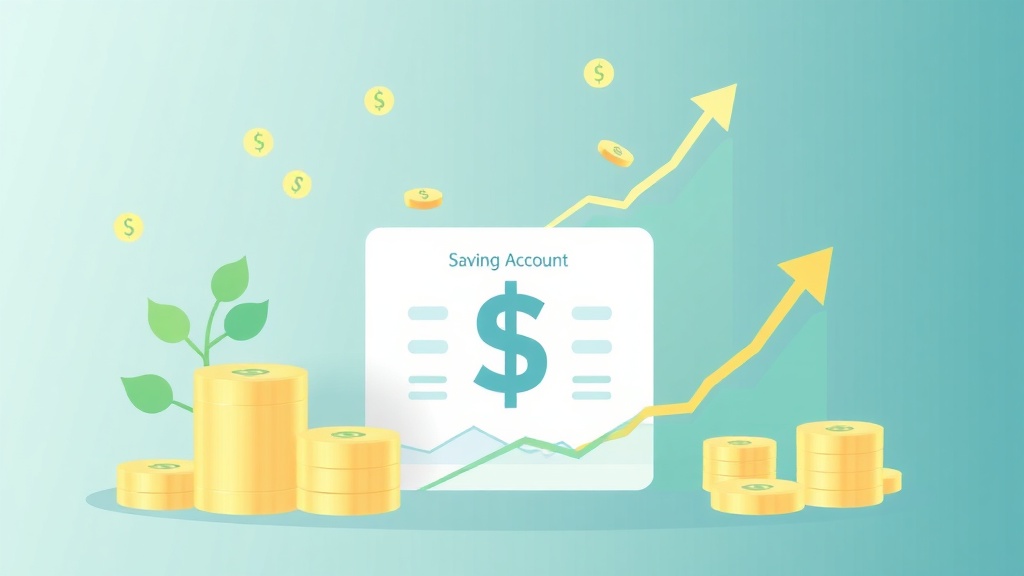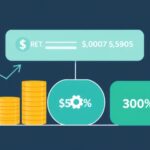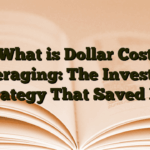What is a High Yield Savings Account: The Money Move You’re Missing
I kept my emergency fund in a regular Chase savings account for three years. Want to know how much interest I earned on $15,000? About $47 total. That’s not a typo. Forty-seven dollars over three years.
Then I learned about high yield savings accounts, moved that same money, and started earning $50 every single month. Same money, same effort (actually less effort), but suddenly my savings were working for me instead of just sitting there collecting dust.
A high yield savings account is basically a savings account on steroids. It works exactly like your regular savings account, except it pays you significantly more interest. We’re talking 10 to 15 times more in most cases. The catch? There isn’t one, really. You just need to know where to find them.
How High Yield Savings Accounts Actually Work
The mechanics are dead simple. You deposit money, the bank pays you interest, and that interest compounds over time. The difference is in the rate. Traditional banks like Chase, Bank of America, and Wells Fargo pay pathetic interest rates because they can. They’ve got physical branches, massive overhead costs, and frankly, they don’t need to compete on savings rates.
High yield savings accounts are almost exclusively offered by online banks. No branches means lower costs, and they pass those savings to you through higher interest rates. Banks like Marcus by Goldman Sachs, Ally Bank, American Express Personal Savings, and CIT Bank are consistently offering rates 10-15x higher than traditional banks.
Here’s what happens behind the scenes: You deposit $10,000 into an account paying 4.5% APY. The bank takes your money and uses it to make loans or investments that earn them more than 4.5%. You get your guaranteed interest, they make a profit on the spread, everyone wins.
The interest typically compounds daily, which means you earn interest on your interest every single day. It’s the same compound interest principle that makes investing powerful, except here it’s guaranteed and FDIC insured.
The Real Math: What You’re Actually Earning
Let me show you the actual difference with real numbers, because that’s what convinced me to make the switch.
If you keep $10,000 in a traditional savings account at 0.40% APY for one year, you’ll earn about $40. That same $10,000 in a high yield savings account at 4.5% APY earns you $460. That’s a difference of $420 for doing literally nothing different.
Now let’s say you’re building an emergency fund like I was. You start with $5,000 and add $200 every month. After one year in a traditional account, you’d have around $7,420. In a high yield savings account? You’d have $7,562. That extra $142 might not sound life-changing, but it’s free money you otherwise wouldn’t have.
Over five years with the same strategy, the difference becomes $3,200 versus $2,400 in interest earned. That’s an extra $800 you can use for literally anything you want. All because you chose a different place to park your money.
The daily compounding matters more than you’d think too. An account that compounds daily at 4.5% APY will earn you about $5 more per year on $10,000 compared to monthly compounding. Over time and with larger balances, that adds up.
FDIC Insurance: Your Money Is Safe
The number one question I get about online banks: “Is my money actually safe?” Short answer: Yes, if the bank is FDIC insured.
FDIC insurance means the Federal Deposit Insurance Corporation guarantees your deposits up to $250,000 per depositor, per bank, per account ownership category. This is the same protection you get at Chase, Bank of America, or any other traditional bank. If the bank fails, the government makes sure you get your money back.
I’ve banked with online-only institutions for five years now and never had a single issue accessing my money. The FDIC insurance gives me the same peace of mind as a brick-and-mortar bank, except I’m earning 10x more interest.
One thing to watch for: Some fintech companies partner with multiple banks to offer coverage beyond $250,000. They’ll automatically distribute your deposits across partner banks so you’re fully covered even with large balances. Just verify that each partner bank is FDIC insured.
Where to Find the Best High Yield Savings Accounts
Finding a good high yield savings account takes about 15 minutes of research. Here’s what actually matters when you’re comparing options:
APY is the most important number. Don’t look at the interest rate, look at the APY (Annual Percentage Yield). This includes compounding and shows you what you’ll actually earn. Rates change frequently, so check current rates from multiple banks.
No monthly fees. Some banks charge $5-10 per month unless you maintain a minimum balance. This defeats the purpose. Most online banks charge zero fees, so don’t settle for less.
No minimum balance requirements. Traditional banks often require $500-2,500 minimum to avoid fees or earn decent interest. The best high yield accounts have $0 minimums or very low requirements like $25-100 to open.
Easy access to your money. You should be able to transfer money to your checking account within 1-3 business days. Some banks offer same-day transfers or debit cards linked to your savings, which is convenient for emergencies.
Banks I’ve personally used and can vouch for: Marcus by Goldman Sachs has consistently competitive rates and zero fees. Ally Bank offers a great interface and 24/7 customer service. American Express Personal Savings sounds weird but they’ve been rock solid. CIT Bank often has the highest rates but requires slightly higher minimums.
High Yield Savings vs Other Options
People always ask: “Why not just invest this money instead?” Fair question with a nuanced answer.
High yield savings accounts are for money you need to keep liquid and safe. Your emergency fund should absolutely be in a high yield savings account, not invested. The stock market can drop 20% overnight, but your savings account balance never will. When your car breaks down or you lose your job, you need guaranteed access to that money immediately.
Money market accounts are basically the same thing as high yield savings accounts with slightly different regulatory classifications. Rates are usually similar. Some offer check-writing privileges, which can be useful.
CDs (Certificates of Deposit) often pay slightly higher rates than savings accounts, but your money is locked up for the CD term (usually 6 months to 5 years). If you need to withdraw early, you’ll pay penalties. CDs make sense for money you definitely won’t need for a specific timeframe.
For money you won’t need for 5+ years, investing makes more sense. Dollar cost averaging into index funds historically returns 7-10% annually. But for short-term savings and emergency funds, high yield savings accounts are the smart play.
The Mistakes That Cost People Money
I’ve made most of these mistakes myself, which is why I can tell you exactly what not to do.
Chasing the highest rate constantly. Moving your money every time a bank offers 0.05% more is exhausting and rarely worth it. Find a bank with consistently competitive rates and stick with them unless there’s a significant difference (like 0.5% or more).
Ignoring withdrawal limits. The federal requirement for a six-withdrawal-per-month limit was suspended in 2020, but many banks still enforce their own limits. Exceed them and you might get hit with fees or have your account converted to checking. Don’t use your savings account like a checking account.
Keeping too much in savings. Once you’ve got your emergency fund fully funded, additional savings should probably be invested. A 4-5% return is good for savings, but inflation is around 3%. You’re barely staying ahead. Money you won’t need for years should be working harder for you.
Not verifying FDIC insurance. Some fintech apps that look like banks aren’t actually banks and aren’t FDIC insured. Always verify before depositing money. Look for “Member FDIC” on their website and check the FDIC’s BankFind tool to confirm.
Falling for promotional rates. Some banks advertise high rates for the first 3-6 months, then drop to average rates. Read the fine print. Sustainable, consistent rates beat temporary promotional rates.
Setting Up Your High Yield Savings Account
The actual process takes about 10 minutes. Here’s exactly what happens:
First, choose your bank based on APY, fees, and minimum requirements. Go to their website and click “Open Account.” You’ll need your Social Security number, government-issued ID, and basic personal information like your address and date of birth.
The bank will verify your identity, which usually happens instantly or within 24 hours. Some banks do a soft credit check (doesn’t affect your score) to confirm you are who you say you are.
Link your existing checking account. You’ll provide your bank’s routing number and your account number. The high yield bank will make two small deposits (like $0.17 and $0.34) that you’ll verify to prove you control the account. This verification process takes 1-3 business days.
Once verified, transfer money from your checking account to your new high yield savings account. Most banks allow you to set up automatic monthly transfers, which is perfect if you’re building your emergency fund.
That’s it. Your money starts earning the higher interest rate immediately. Interest is typically calculated daily and paid monthly, so you’ll see your first interest payment at the end of the month.
How High Yield Savings Fits Your Overall Financial Strategy
High yield savings accounts have a specific role in your financial life. They’re not for growing wealth long-term, they’re for protecting wealth short-term while earning something meaningful.
Here’s how I structure my money: Three to six months of expenses sit in my high yield savings account as an emergency fund. This is money I hopefully never touch, but it’s there if I lose my job, have medical expenses, or face any major unexpected cost.
Short-term savings goals (1-3 years) also go in high yield savings. If I’m saving for a down payment on a house, a new car, or a big vacation, that money goes here. The timeline is too short to risk market volatility, but long enough that earning decent interest matters.
Everything else gets invested. My retirement accounts, brokerage account for long-term investing, all of that follows the broader allocation strategy where I’m willing to accept market risk in exchange for higher long-term returns.
The high yield savings account is the foundation. It’s the safety net that lets me take calculated risks everywhere else. Knowing I’ve got 6 months of expenses safely tucked away means I can invest more aggressively in my retirement accounts without worrying about short-term volatility.
What About Rates Going Down?
High yield savings account rates are variable, which means they change based on what the Federal Reserve does with interest rates. When the Fed cuts rates, savings account rates typically drop. When they raise rates, savings rates go up.
As of November 2025, rates are still relatively high at 4-5%, but the Fed has been cutting rates. Experts predict rates could drop to around 3-4% by mid-2026. Does this change anything about the strategy? Not really.
Even at 3%, a high yield savings account still beats traditional banks by a huge margin. The national average for traditional savings accounts will drop too, but it’ll stay pathetically low. The spread between high yield and traditional accounts remains massive regardless of where overall rates are.
This is actually an argument for locking in high rates now if you’re considering CDs. A 12-month CD at 4.5% guarantees that rate for the full year even if savings rates drop. But for money you need liquid access to, stay with the high yield savings account and accept that rates will fluctuate.
Questions I Get Asked Constantly
“Can I lose money in a high yield savings account?” No, assuming the bank is FDIC insured and you’re under the $250,000 limit. Your balance only goes up, never down. The rate might decrease, meaning you earn less interest, but your principal is always protected.
“How fast can I access my money?” Transfers to external checking accounts typically take 1-3 business days. Some banks offer same-day transfers for a small fee. A few banks provide debit cards linked to your savings, giving you instant access (though withdrawal limits may apply).
“Do I pay taxes on the interest?” Yes, interest earned is taxable income. You’ll receive a 1099-INT form from your bank showing your interest income for the year. Factor this into your tax planning, though at current rates you’d need to earn over $600 in interest before the bank is required to report it.
“Can I have multiple high yield savings accounts?” Absolutely. Some people use multiple accounts for different savings goals (emergency fund at one bank, vacation fund at another). Just make sure you’re not spreading yourself too thin trying to manage everything.
“What if the online bank goes out of business?” If it’s FDIC insured, you’re protected up to $250,000. The FDIC will either transfer your account to another bank or mail you a check. This process typically happens within a few days. I’ve never experienced a bank failure personally, but the system is designed to make it seamless.
The Bottom Line
Moving my emergency fund to a high yield savings account was one of the simplest financial decisions I’ve ever made, and it continues paying dividends every single month. Fifteen minutes of setup in exchange for earning 10-15x more interest is an unbeatable return on time invested.
If you’ve got money sitting in a traditional savings account earning 0.40%, you’re leaving hundreds or thousands of dollars on the table every year. That money could be working harder for you with zero additional effort and zero additional risk.
The best time to open a high yield savings account was yesterday. The second best time is today. Find a bank with competitive rates, verify they’re FDIC insured, transfer your money, and watch your savings actually grow for once.
Your future self will thank you for making the switch. Mine certainly does every time I see that interest deposit hit my account.






